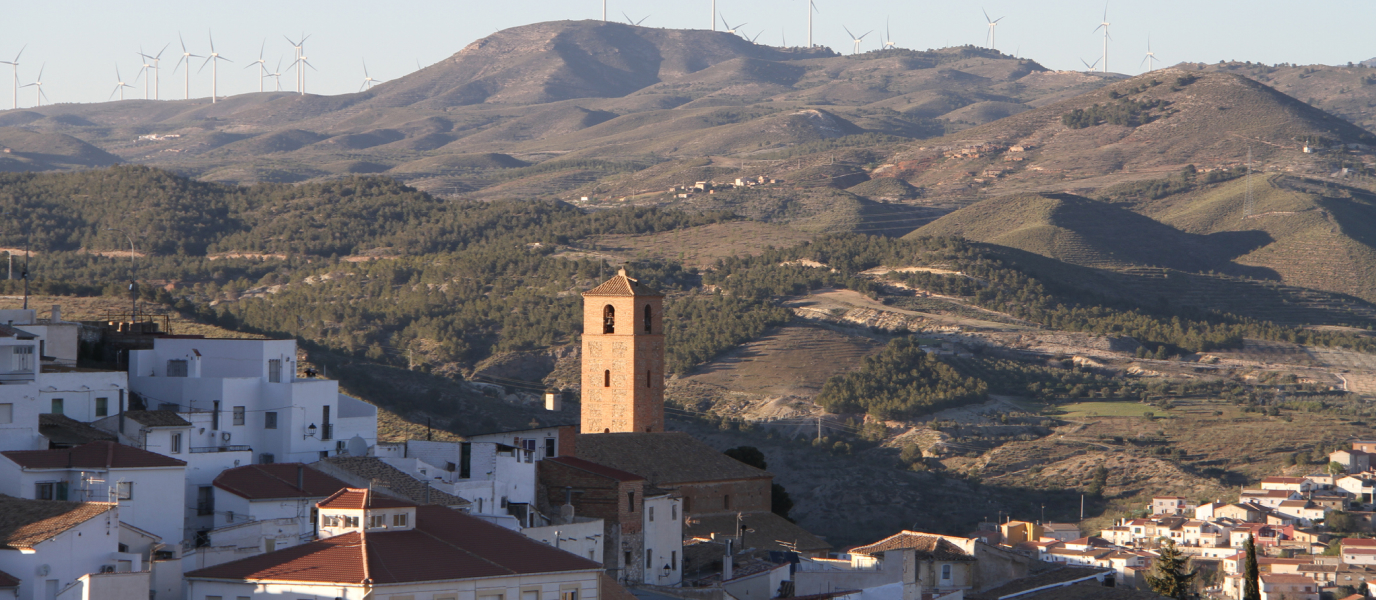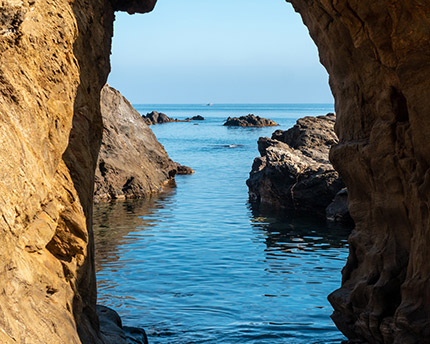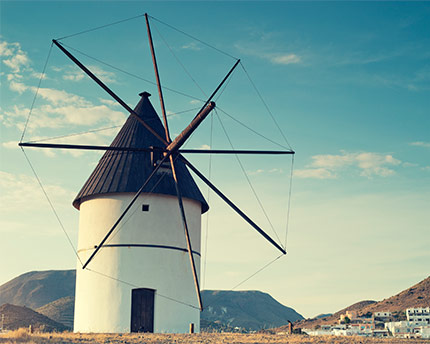Even though the region of Alpujarra is normally associated with Granada, the neighbouring region of Almería also plays a part in this mystical place. Situated just to the west of Almería and jutting into the fertile Andarax valley – which runs through the Sierra de Gádor and the Sierra Nevada – the Almerian Alpujarra is made up of 22 towns that are inextricably linked to the historical Muslim communities in the region. Its mountainous surroundings – some of which reach heights of more than 2000 m above sea level – contrast drastically with the more common image of Andalucía being a place of unending deserts and extensive fields filled with greenhouses.
Between Alhama de Almería, the gateway to the Almerian Alpujarra, and Laujar de Andarax, the central hub of the region, stretches the motorway A-348, along which the intrepid traveller will find a series of beautiful, mountain villages. Along this trail, history and legend intertwine and the glorious mountaintop cuisine makes it the perfect secluded place to unwind and relax.
The essence of Alpujarra in the Almerian mountains
‘Alpujarra is the balcony from which Spain looks out upon the dreamlike coasts of Africa which, from across the sea, send loving smiles back.’ These are the words the celebrated modernist poet Francisco Villaespesa used to describe his beloved homeland, the Almerian Alpujarra, and they perfectly encapsulate the romantic reputation that precedes the region today. As well as boasting traces of a Roman past, this region exudes Arabic culture at every turn.
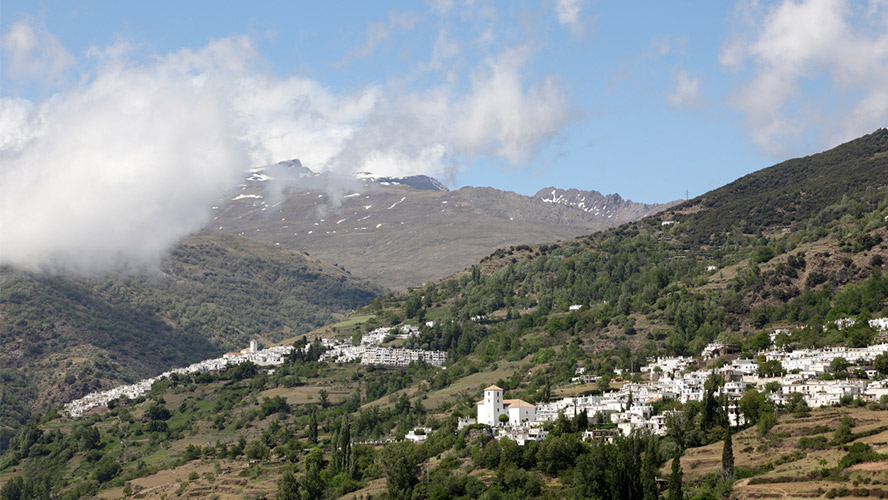
An array of Muslim dynasties called the Iberian Peninsula their home between the 7th and 15th centuries and contemporary chronicles continue to remind readers of the immense pain its inhabitants felt when the ‘Catholic Monarchs’ Isabella I and Ferdinand II culminated their ‘reconquest’ of the land in 1492. In fact, it was in Laujar de Andarax where Boabdil, the last Nazari sultan of Granada, shut himself away before he was finally expelled from Spain.
Since that time, however, much of the Moorish legacy has lived on in Alpujarra, from the design of its towns to the ingenious techniques that were introduced to take advantage of what little water exists to irrigate the land. The panoply of slate roofs, gravel paths and the poplar, chestnut and walnut wood used to build window frames show that the locals have long utilised the natural resources on offer to build their homesteads. These were organised in a stunning latticework many centuries ago, which today results in the labyrinth of steep and winding streets. These often have what are called tinaos, a kind of alleyway that travels beneath parts of the houses, which make for quaint tunnel-like structures throughout the towns.
The towns of the Almerian Alpujarra
Alhama de Almería
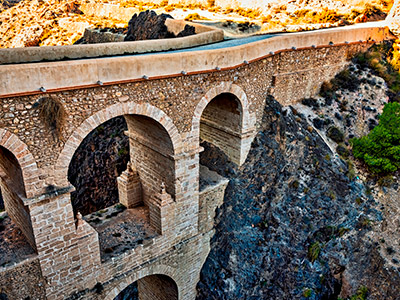
Any trip to the Almerian Alpujarra really must begin from the eastern side, at Alhama de Almería. This hilltop town today has a population of only around 4000 but it boasts a rich history, since it was initially constructed by the Romans and then added to by the Moors. This is the reason for the immense quantity of archaeological remains discovered in its environs over the years, such as ‘La Puente’, an exceptionally well-preserved roman viaduct and the ‘Loma de Galera’, a prehistoric necropolis. Even its name can be traced back to its romantic origins since the word Alhama comes from the Arabic for ‘sacred waters,’ referring to the thermal baths which flow from the nearby Sierra de Gádor and are now found in the San Nicolas Spa in the centre of the town.
Padules
Continuing along the aforementioned motorway, you will come to the town of Padules, which also claims an impressive history. It too has definitively Moorish influences, especially in the Old Town, where the impressive buildings include the Church of Santa María La Mayor with the typical earth-coloured walls of the region. In the lower neighbourhood of Padules lies what is known as the Cavalry Cross (Cruz de Humilladero), which was placed there after the local Moorish inhabitants revolted against the Christians towards the end of the 16th century. It is also worth visiting the famous Padules Canals, natural channels that were formed by the flow of the River Andarax. One aspect of Padules that is certainly not to be missed, however, is the wine, made famous the world over by its exquisite local grape Ohanes!
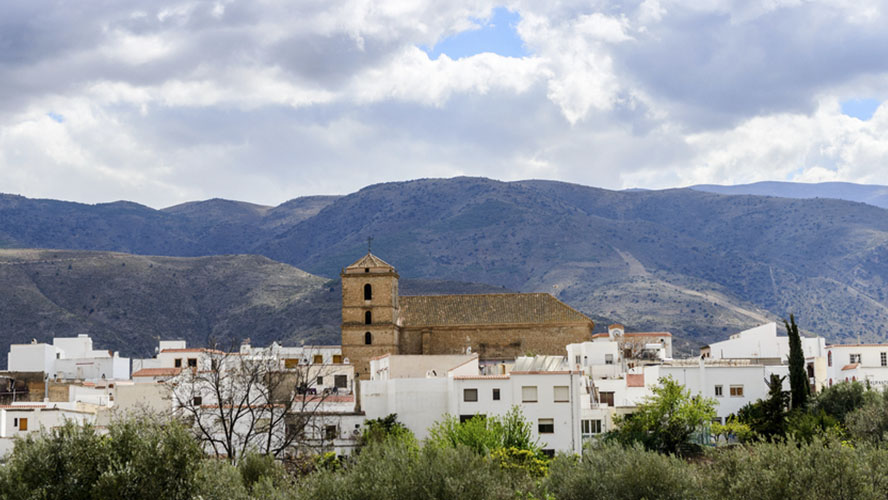
Almócita
A mere 2 kilometres from Padules you will come to Almócita, whose name comes from the Arabic meaning ‘the one in the middle’ since it is located exactly half way between the border of Alpujarra and its centre. While meandering through its white streets, keep an eye out for the poems and paintings on the walls, which are testimony to the many romantic writers and artists of the 19th century that came from the region. Nearby there is also the old Jewish quarter of the city and the washing-cistern which is one of the oldest hydraulic installations in Alpujarra, dating back to the time of the Moors. If stretching your legs is your kind of thing then Almócita is perfect for you. Standing 835 m above sea level, Almócita offers an array of walking paths of varying difficulties and the Tourist Information Office can offer excellent advice about which is most suitable for you.
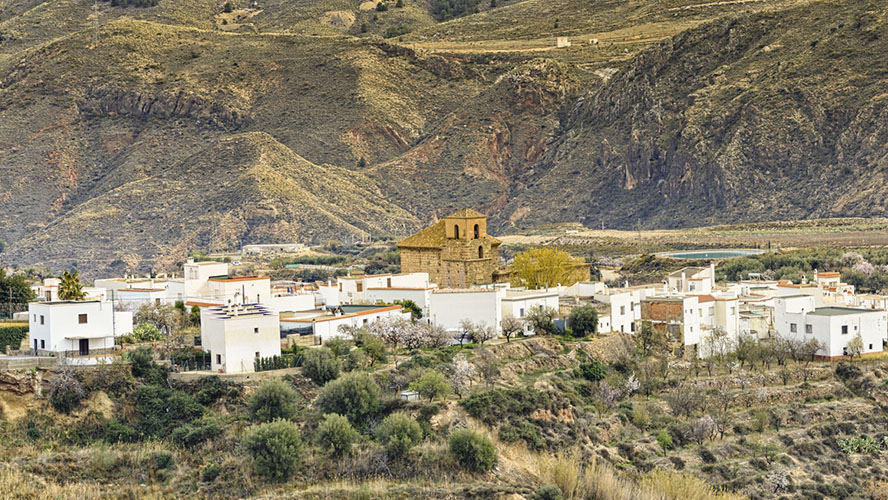
Fondón
The next town along is Fondón, famous for containing one of the regions architectural treasures. The palatial house of the Godoyas is a luxurious building constructed between the 17th and 18th centuries by one of the Noble Christian families who moved in to repopulate the area when the Muslims were driven out in 1571. Since 2011, this place has become home to a large collection of art and historical objects from this lost corner of Spain.
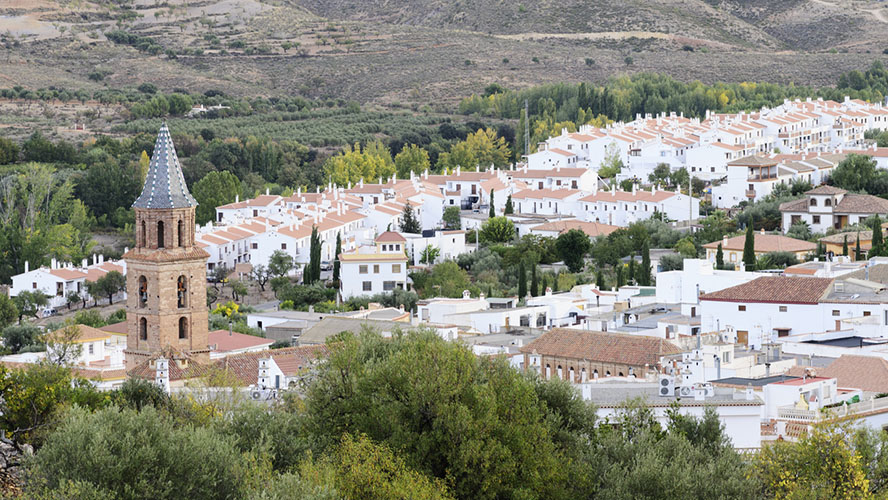
Here you can also visit the famous El Olivillo restaurant (Calle Almería, 31), where you can try Alpujarran cuisine in all its splendour. Migas con tropezones is just one of the dishes that has made this restaurant a magnet for food-lovers from all over the world.
Laujar de Andarax
Continuing along the A-348 you will arrive at the heart of Alpujarra, Laujar de Andarax– or as the Arabic denizens of the region called it, the cavern of the mountain. Unsurprisingly, the town takes its name from the river that has directed the inhabitants’ traditional way of life for centuries. Dividing the town in two, the river not only feeds the local fountains but also irrigates the many fruit trees that line its banks. Visitors to Laujar de Andarax come away feeling that they’ve enjoyed the best of nature – thanks to the El Nacimiento Recreational Area – and architecture, since the town also boasts the spectacular Church of the Encarnación – with its Mudejar and Barroque style – and the remains of the old Moorish citadel or the Stately Home of the Moya Family. Finally, a trip to the Fabriquilla (Paraje de Nacimiento) is a must for all food-lovers. Situated in an old electricity plant, this culinary gem is famous for its grilled meats and is the perfect place to end a magical trip to Alpujarra.




































































